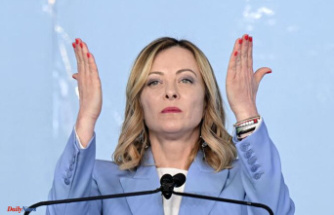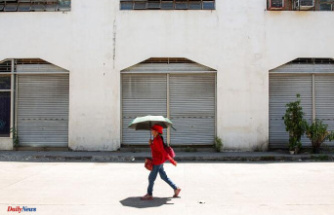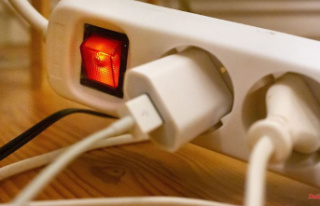Chemnitz (dpa/sn) - The Gunzenhauser Museum in Chemnitz is presenting new acquisitions from the Federal Art Collection in a special show. From around 360 acquisitions over the past five years, around 50 works by 44 artists living in Germany were selected, which are dedicated to themes such as migration, identity, stereotypes, but also power and authority. The title of the special show "present perfect", which opens on Saturday and can be seen until mid-February, is a canvas work by the Kabul-born artist Tamina Amadyar.
An installation by Silke Wagner can also be seen: the lettering "Die Deutsche Population" in different colored letters. Based on the inscription "The German people" on the Reichstag building in Berlin, she puts people with racist and right-wing extremist attitudes in relation to the so-called quiet middle. A series of ink drawings by Nasan Tur on the word "capital" will be shown, while Benedikt Terwiel uses photographs to trace a disappeared snack bar in Berlin as a symbol of the changing cityscape and the consequences of gentrification. Meanwhile, Lena Henke depicts men's feet forced into condoms in a huge photograph - the rest of the body is hidden.
The exhibition is a cooperation with the Bundeskunsthalle and the Neues Museum in Nuremberg. At the same time as the Chemnitz show, works from the Federal Art Collection are also being shown there under the title "With the door falling into the house". Chemnitz and Nuremberg were competitors for the title of European Capital of Culture 2025, which ultimately went to Saxony. "The joint exhibition project sets a sign for cooperation and for the unifying language of art," says a press release from the Nuremberg museum.
The federal government has been buying works by contemporary artists since 1971, for example at trade fairs, in galleries or directly from artists. A commission of experts decides on the purchases. According to the information, the collection now includes around 2000 works. It is a collection without a house - there is no fixed place where the works of art are permanently displayed. Rather, they are loaned to public institutions, ministries and museums.












